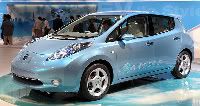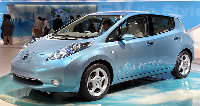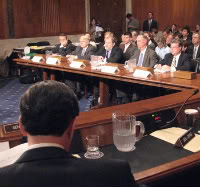Some People Are Disgusted by Efficient Little Cars

I’ll roll with you on shifts in attitude. They are, however, notoriously difficult to predict. I don’t particularly give such a shift good odds when it comes to cars….I’m not yet a believer that people will come to embrace the little ducklings of our industry such as the original Insight, the Smart, i MiEV, etc. And even if such an event happens, there will be a general disgust rather than embrace…
You bring up a good point when you mention “disgust.” I notice that some people sneer at drivers of clean little cars — as if those of us who care about our world and the well-being of those around us are weak, pathetic, bleeding hearts. It’s an interesting phenomenon. And it will be more interesting to see how — or if — this dynamic changes over time.
But speaking of dynamics, one thing that is evident to anyone who’s every driven an i-MiEV or a Mini E is that they perform like little rocketships. The Mini E has a 200 HP motor (about the size of a basketball). With maximum torque at zero RPM, the G-force when you hit the accelerator from a dead stop is absolutely ridiculous. In my test-drives of both cars, I notice that this creates a kind of fun little dynamic in the minds of both drivers when my little EV blasts past a Corvette or a Porsche.



 2GreenEnergy associate Bruce Allen supports oil drilling off the coast of California as a means of cleaning up the huge amount of crude and methane that are poured into the ocean every day. But of course, this idea is counter-intuitive, insofar as most environmentalists work against the idea of any and all drilling.
2GreenEnergy associate Bruce Allen supports oil drilling off the coast of California as a means of cleaning up the huge amount of crude and methane that are poured into the ocean every day. But of course, this idea is counter-intuitive, insofar as most environmentalists work against the idea of any and all drilling.
 I was just editing my book’s chapter on media, which features an interview with Sustainable Business’s Rona Fried, which made me think about sustainable agriculture — one of her favorite subjects. No sooner had a saved the file did I note an email from another person I respect greatly,
I was just editing my book’s chapter on media, which features an interview with Sustainable Business’s Rona Fried, which made me think about sustainable agriculture — one of her favorite subjects. No sooner had a saved the file did I note an email from another person I respect greatly, 
 In addition to my work at 2GreenEnergy, I’m a partner in two companies related to electric vehicles. One is the largest website on Earth dedicated to EVs — an 11-year-old website with 225,000 unique vistors a month —
In addition to my work at 2GreenEnergy, I’m a partner in two companies related to electric vehicles. One is the largest website on Earth dedicated to EVs — an 11-year-old website with 225,000 unique vistors a month — 
 Yesterday, I wrote a post featuring a
Yesterday, I wrote a post featuring a 
